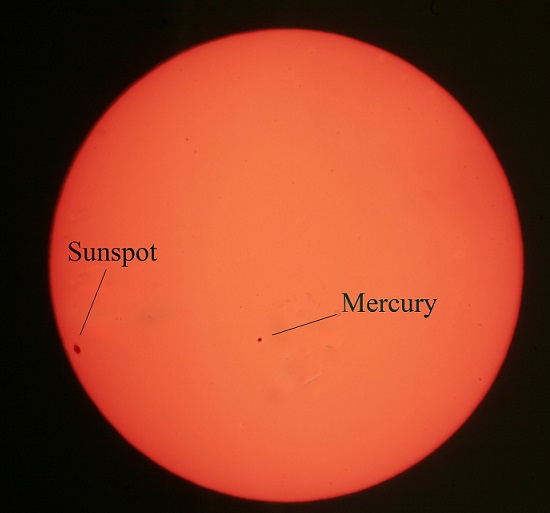The transit of a planet occurs when the planet passes between the Earth and the Sun, and from the Earth, we can see a small black dot travel across the face of the Sun - see image on the right of the 2006 transit. credit B. Bunker
For obvious reasons, we can only see transits of Mercury and Venus. Transits of Venus are fairly rare, happening in pairs, with generally more than a century between each pair, while transits of Mercury are more common happening roughly 13 times a century..
On May 9, Mercury will transit, for the first time in 10 years. Below is the map of from where on Earth this transit will be visible. Credit: EclipseWise.com
Mercury is very small compared to the sun (only 1/158 of its apparent diameter), so viewing with a solar telescope is recommended. Make sure your telescope is equipped to safely view the sun, otherwise you will risk serious damage to your eyes (and your telescope).
For more information on the eclipse, including viewing advice and how to time the eclipse to help with science research visit EclipseWise.com.
Share your photos from this exciting event with us and the world on Facebook, or Tweet using #GAM2016 hashtag (@gam_awb).
If you are planning to hold a viewing session for the transit, don't forget to register your event, so everyone can see!











